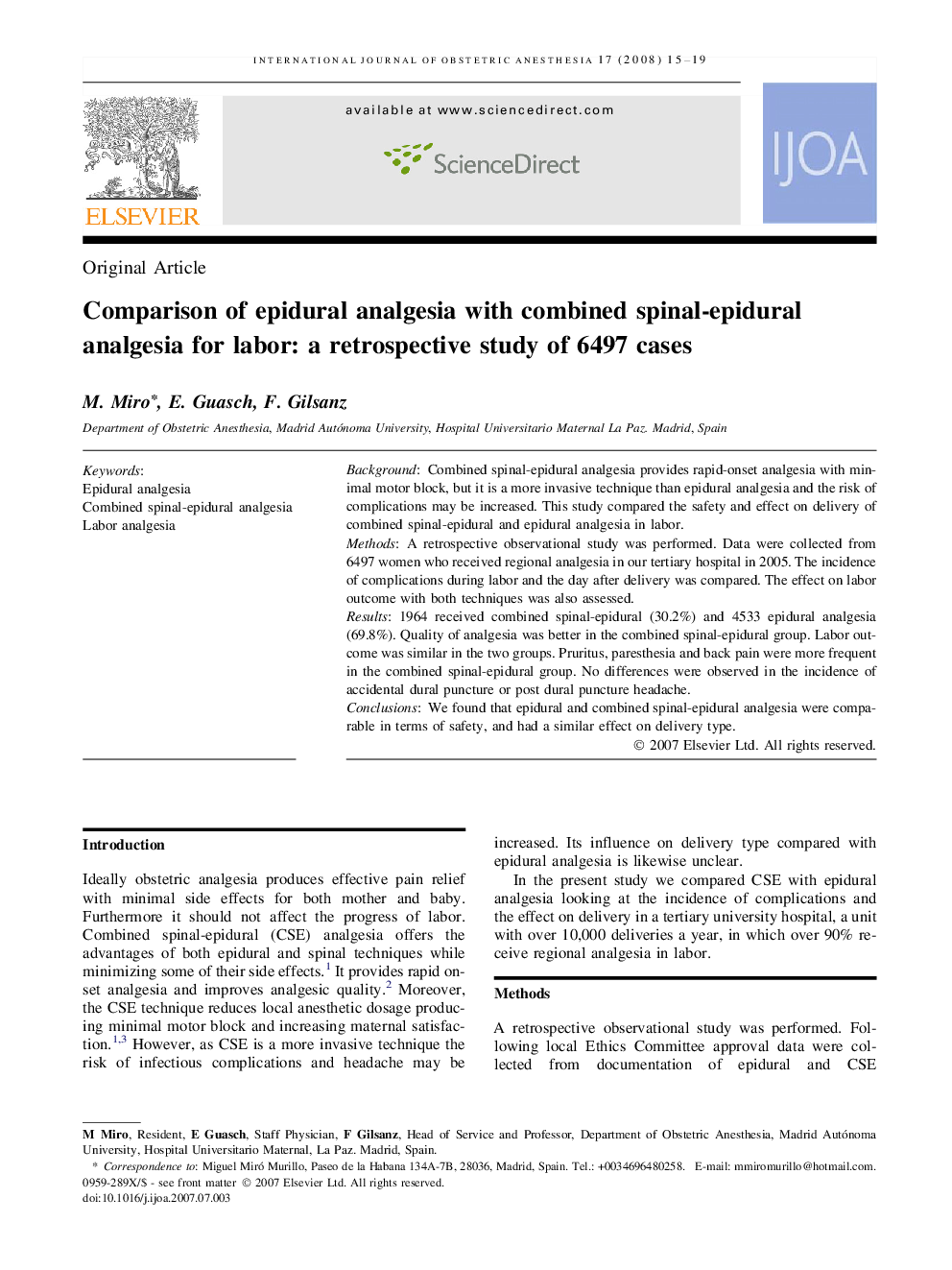| Article ID | Journal | Published Year | Pages | File Type |
|---|---|---|---|---|
| 2758081 | International Journal of Obstetric Anesthesia | 2008 | 5 Pages |
BackgroundCombined spinal-epidural analgesia provides rapid-onset analgesia with minimal motor block, but it is a more invasive technique than epidural analgesia and the risk of complications may be increased. This study compared the safety and effect on delivery of combined spinal-epidural and epidural analgesia in labor.MethodsA retrospective observational study was performed. Data were collected from 6497 women who received regional analgesia in our tertiary hospital in 2005. The incidence of complications during labor and the day after delivery was compared. The effect on labor outcome with both techniques was also assessed.Results1964 received combined spinal-epidural (30.2%) and 4533 epidural analgesia (69.8%). Quality of analgesia was better in the combined spinal-epidural group. Labor outcome was similar in the two groups. Pruritus, paresthesia and back pain were more frequent in the combined spinal-epidural group. No differences were observed in the incidence of accidental dural puncture or post dural puncture headache.ConclusionsWe found that epidural and combined spinal-epidural analgesia were comparable in terms of safety, and had a similar effect on delivery type.
